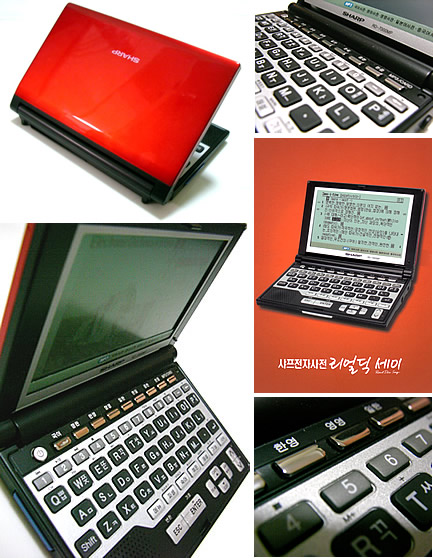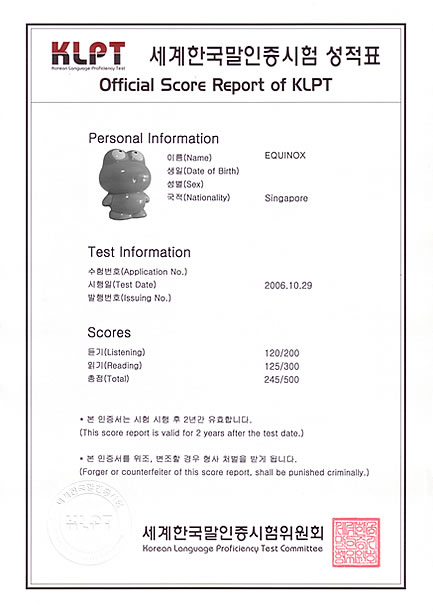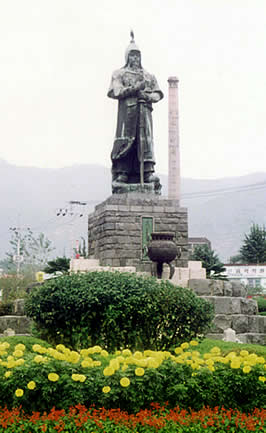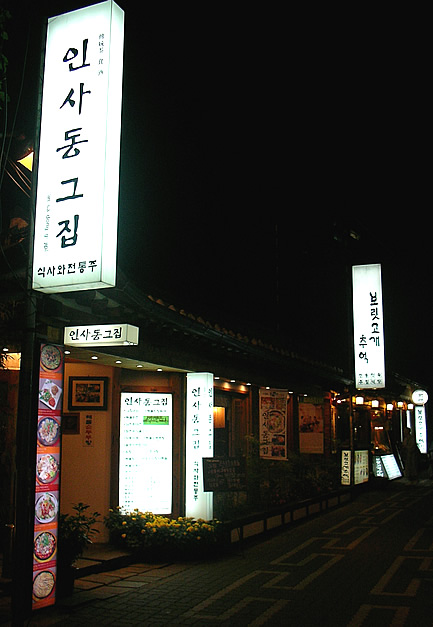 잠을 자는 토토로를 보면 또 제 휴가 때예요. 한국행 비행기표가 다 팔려서 내일 중국 상해에 여행하러 갈 거예요. 일주일 동안 블로그를 못 하는데요. 내년 제 블로그에서 다시 만납시다. 새해 복 많이 받으세요. 안녕히 계세요. 그럼~
잠을 자는 토토로를 보면 또 제 휴가 때예요. 한국행 비행기표가 다 팔려서 내일 중국 상해에 여행하러 갈 거예요. 일주일 동안 블로그를 못 하는데요. 내년 제 블로그에서 다시 만납시다. 새해 복 많이 받으세요. 안녕히 계세요. 그럼~이퀴녹
 잠을 자는 토토로를 보면 또 제 휴가 때예요. 한국행 비행기표가 다 팔려서 내일 중국 상해에 여행하러 갈 거예요. 일주일 동안 블로그를 못 하는데요. 내년 제 블로그에서 다시 만납시다. 새해 복 많이 받으세요. 안녕히 계세요. 그럼~
잠을 자는 토토로를 보면 또 제 휴가 때예요. 한국행 비행기표가 다 팔려서 내일 중국 상해에 여행하러 갈 거예요. 일주일 동안 블로그를 못 하는데요. 내년 제 블로그에서 다시 만납시다. 새해 복 많이 받으세요. 안녕히 계세요. 그럼~ "Love Letter" like "Il Mare" is not easily comprehensible. These are two of the few movies that I watched twice in the cinema. I cannot understand their plots easily not because they are foreign language films but because their plots are very subtle. But once I understood them, they just overwhelmed me.
"Love Letter" like "Il Mare" is not easily comprehensible. These are two of the few movies that I watched twice in the cinema. I cannot understand their plots easily not because they are foreign language films but because their plots are very subtle. But once I understood them, they just overwhelmed me. I first saw this tablet, carried on a tortoise-like beast, standing cospiciously near the entrance of Bulguksa. The history of Bulguksa was inscribed on the tablet. Initially, I thought the tortoise-looking beast was a part of Korean mythology. However, after my visit to Beijing, I realised that the beast was actually a Chinese mythological creature.
I first saw this tablet, carried on a tortoise-like beast, standing cospiciously near the entrance of Bulguksa. The history of Bulguksa was inscribed on the tablet. Initially, I thought the tortoise-looking beast was a part of Korean mythology. However, after my visit to Beijing, I realised that the beast was actually a Chinese mythological creature. The sky finally cleared up yesterday afternoon, so I decided to go for a stroll in Orchard Road to soak in the tropical Christmas atmosphere. I did get soak afterall - but in my perspiration. Although it has been raining for weeks and night temperature averaging about 26 deg C, I was still feeling quite warm yesterday night.
The sky finally cleared up yesterday afternoon, so I decided to go for a stroll in Orchard Road to soak in the tropical Christmas atmosphere. I did get soak afterall - but in my perspiration. Although it has been raining for weeks and night temperature averaging about 26 deg C, I was still feeling quite warm yesterday night.



 Jung Hwa Jeon (중화전-中和殿) - The main hall of Deoksugung
Jung Hwa Jeon (중화전-中和殿) - The main hall of Deoksugung The National Museum of Comtemporary Art in Deoksugung
The National Museum of Comtemporary Art in Deoksugung  집이 근처에 찍은 사진이야. 시원 날씨를 좋아하는군!
집이 근처에 찍은 사진이야. 시원 날씨를 좋아하는군!




 A month later, back in Singapore, a friend who just came back from Seoul lent me her SNU's Korean language textbook volume 3. She said that her Korean language level was not good enough to use the textbook yet. She probably has over-estimated my language standard as well. As written in the textbook, it is meant for adult learners who have a knowledge of Korean with about 400 hours of classroom time or the equivalent. Adding up all the formal Korean language lesson time I have, I am not even meeting half of the classroom time required by the textbook.
A month later, back in Singapore, a friend who just came back from Seoul lent me her SNU's Korean language textbook volume 3. She said that her Korean language level was not good enough to use the textbook yet. She probably has over-estimated my language standard as well. As written in the textbook, it is meant for adult learners who have a knowledge of Korean with about 400 hours of classroom time or the equivalent. Adding up all the formal Korean language lesson time I have, I am not even meeting half of the classroom time required by the textbook.

 How I wish I have a neko-bus that can take me to anywhere I wish. Neko-bus is good in that its seat is "furry" comfortable and it is free. The only problem with the bus is that it operates only at night.
How I wish I have a neko-bus that can take me to anywhere I wish. Neko-bus is good in that its seat is "furry" comfortable and it is free. The only problem with the bus is that it operates only at night. 


 If I have to make a comparison, Lena Park is in the same league as Mariah Carey(US), Misia(Japan) and Zhang Huimei(Taiwan). They are similar in that they all have a powerful lung and a "voice kissed by the God". Mariah Carey's vocal range was said to stretch over seven octaves while Misia could hit five octaves with ease. Normal singers would be considered to have a good vocal range if they can hit three octaves.
If I have to make a comparison, Lena Park is in the same league as Mariah Carey(US), Misia(Japan) and Zhang Huimei(Taiwan). They are similar in that they all have a powerful lung and a "voice kissed by the God". Mariah Carey's vocal range was said to stretch over seven octaves while Misia could hit five octaves with ease. Normal singers would be considered to have a good vocal range if they can hit three octaves.



 Above is the iconic university administration building. Our first language lesson was conducted by Kim Seon Saeng Nim in this building. It was a special arrangement made by the Institute of International Education so that we could have the experience of studying in this beautiful building.
Above is the iconic university administration building. Our first language lesson was conducted by Kim Seon Saeng Nim in this building. It was a special arrangement made by the Institute of International Education so that we could have the experience of studying in this beautiful building. [Top Left] Grand Auditorium. [Top Right] Bronze Sculpture. [Bottom] Central Library. The Grand Auditorium can easily be mistaken as a Cathedral but it isn't. The Central Library seems to be a favourite filming site for Korean movie. You can see it in "Classics" and "Traces of Love". Coming from a former British colony, where European-style buildings are common, I still feel that the buildings in Kyunghee are beautiful.
[Top Left] Grand Auditorium. [Top Right] Bronze Sculpture. [Bottom] Central Library. The Grand Auditorium can easily be mistaken as a Cathedral but it isn't. The Central Library seems to be a favourite filming site for Korean movie. You can see it in "Classics" and "Traces of Love". Coming from a former British colony, where European-style buildings are common, I still feel that the buildings in Kyunghee are beautiful.
 This is the slope we had to climb every morning to reach the Institute of International Education where we had our daily lesson. IIE is the white building at the end of this road to the right.
This is the slope we had to climb every morning to reach the Institute of International Education where we had our daily lesson. IIE is the white building at the end of this road to the right. On reaching the entrance of IIE, there were some more steps to climb to the main door. After that, there was still staircase to climb before we finally reached our classroom. It was a good workout every day.
On reaching the entrance of IIE, there were some more steps to climb to the main door. After that, there was still staircase to climb before we finally reached our classroom. It was a good workout every day. One of the thing we did during our lesson was to do a presentation of ourselves. For our standard, we could only read off our script. Frankly, I didn't understand what others were talking about. Neither did I know what I was talking about. At that time, my Korean language standard was really that bad. 미안해요.
One of the thing we did during our lesson was to do a presentation of ourselves. For our standard, we could only read off our script. Frankly, I didn't understand what others were talking about. Neither did I know what I was talking about. At that time, my Korean language standard was really that bad. 미안해요. Kyunghee Seoul campus, is really a very nice place for tertiary education. However, it was not just the place that made this immersion programme memorable. Thanks to our teachers at Kyunghee. The interesting and animated 김민재, the chubby and cool 임채훈 and the cute and shy 고우리. Thanks to our dowoomis who spent their time with us. Finally, thanks to the company of my classmates. I will remember the time when we ate the 32cm-tall ice cream in Myeongdong at near zero temperature. That was a really "cool" experience.
Kyunghee Seoul campus, is really a very nice place for tertiary education. However, it was not just the place that made this immersion programme memorable. Thanks to our teachers at Kyunghee. The interesting and animated 김민재, the chubby and cool 임채훈 and the cute and shy 고우리. Thanks to our dowoomis who spent their time with us. Finally, thanks to the company of my classmates. I will remember the time when we ate the 32cm-tall ice cream in Myeongdong at near zero temperature. That was a really "cool" experience. 
 Yesterday, my KLPT class had a post-KLPT gathering. We have our dinner at a Korean restaurant. Our Korean teacher assistant, 이윤숙, joined us for the gathering. It is probably the last time we will see her. She is going back to Korea at the end of this month after 11 months in Singapore. She came here for the purpose of studying Chinese at NUS Extension. So yesterday dinner was also sort of a farewell dinner for her.
Yesterday, my KLPT class had a post-KLPT gathering. We have our dinner at a Korean restaurant. Our Korean teacher assistant, 이윤숙, joined us for the gathering. It is probably the last time we will see her. She is going back to Korea at the end of this month after 11 months in Singapore. She came here for the purpose of studying Chinese at NUS Extension. So yesterday dinner was also sort of a farewell dinner for her.







 This Korean restaurant in Insadong is simply called "인사동그집" or "Insadong That Eating House". It is like saying I don't know the name of the eating house but you know at Insadong that eating house, that one, you know, you know? Or in Singapore context, I can say Katong That Laksa or Tiong Bahru That Chwee Kueh or Changi That Nasi Lemak and Singaporeans will go ya ya ya (yes, yes, yes), that one, I know, I know. In a certain sense, "인사동그집" can mean THE eating house of Insadong. I would think that only eating house worth their salt would dare to go by such "name". I could only think because I never went in and tried out the food and wine. That eating house was quite crowded though.
This Korean restaurant in Insadong is simply called "인사동그집" or "Insadong That Eating House". It is like saying I don't know the name of the eating house but you know at Insadong that eating house, that one, you know, you know? Or in Singapore context, I can say Katong That Laksa or Tiong Bahru That Chwee Kueh or Changi That Nasi Lemak and Singaporeans will go ya ya ya (yes, yes, yes), that one, I know, I know. In a certain sense, "인사동그집" can mean THE eating house of Insadong. I would think that only eating house worth their salt would dare to go by such "name". I could only think because I never went in and tried out the food and wine. That eating house was quite crowded though.